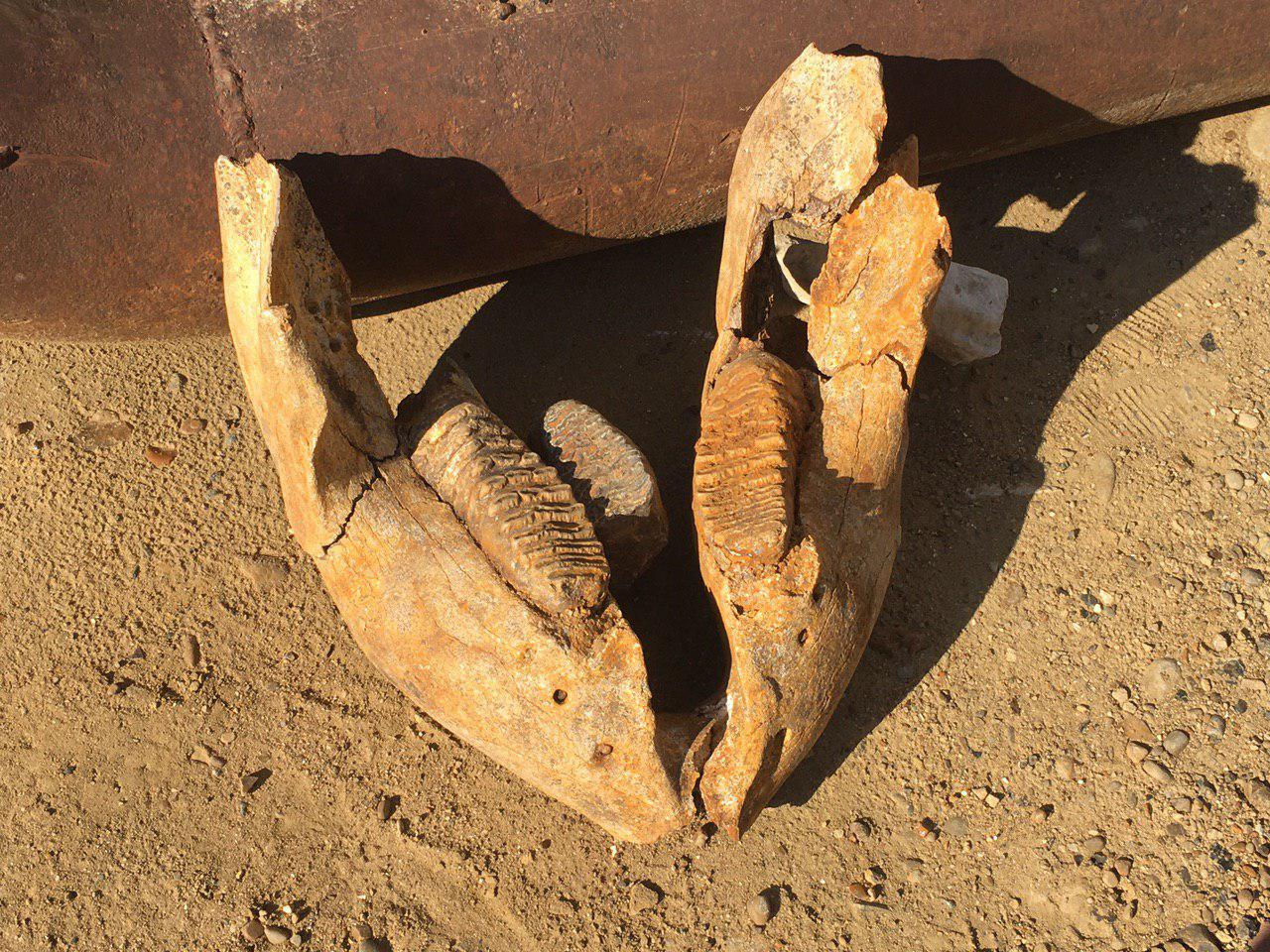Tiraspol, February 19./Novosti Pridnestrovya/. A lower jaw of a Mammuthus trogontherii was found in the Sucleian quarry. The bone of the ancient ancestor of modern elephants and the predecessor of mammoths was discovered by the workers of the mining company Tirnistrom. Today, the find was handed over to Pridnestrovian State University Geological-paleontological Museum.
This is not the first but largest archaeological finding of the company workers. The museum has already received from the Sucleian quarry bones and teeth of ancient animals that once lived on the territory of the Kolkotov Beam.
Scientists from the PSU have suggested that the age of the remains can reach between 500 and 750,000 years.
The Sucleian quarry is the so-called fifth deposit of the Kolkotov Terrace. The development of the deposit has began in the early 20th century while construction of the railway in Tiraspol. At that time, the first faunal remains were found in the Kolkotov Beam area. Now it is known around the world as the Tiraspol Faunal Complex.
''During the Soviet period, everything that was found in quarries on the territory of Pridnestrovie was sent to Chisinau, Moscow, Leningrad museums. A lot of bones were lost because there was no museum. In the scientific paleontological community, Tiraspol is well known around the world. Therefore, it is very significant that 2020 marked as the Year of Paleontology for the PSU research laboratory has began with such a wonderful find,'' Elena Kravchenko, the Head of the PSU Geological-Paleontological Museum explained.
Mammuthus trogontherii, or, as it is also called, the steppe mammoth, inhabited Eurasia in the middle Pleistocene, about 500-750 thousand years ago.
Reaching a 5-meter height in his shoulders and weighing about 10 tons, he was perhaps the largest member of the elephant family in the world. The Mammuthus trogontherii had also had the largest tusks among all Proboscidea Huge spirally bent males beatings could sometimes reach more than 5 meters.
About 250,000 years ago, the steppe mammoth was replaced by his most famous and recognizable descendant, the woolly mammoth.
In spring, the jaw of the ancient elephant will be exhibited in the PSU Geological-Paleontological Museum.








